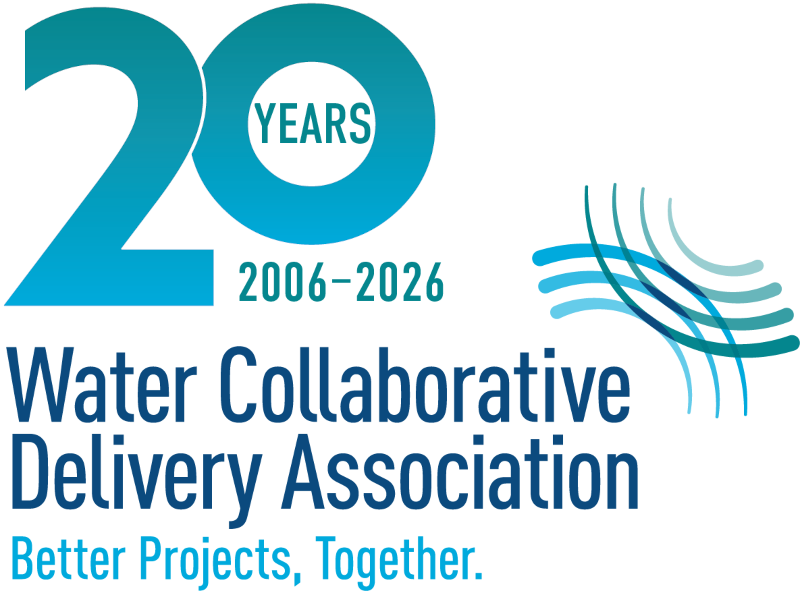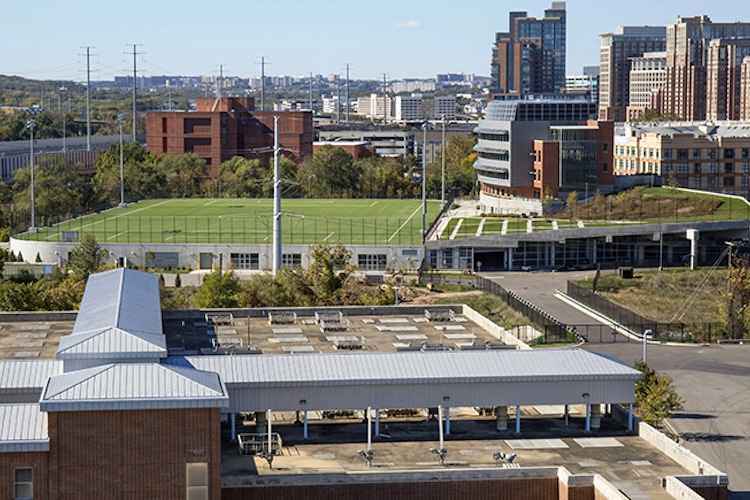The construction industry faces a significant challenge: achieving ambitious sustainability goals while delivering projects on time and within budget. Traditional, siloed project delivery methods often struggle to address these goals effectively due to differing priorities and goals. Here’s where collaborative delivery shines. By fostering open communication and shared objectives among all stakeholders early in the project timeline, collaborative delivery provides a pipeline for sustainable construction methodologies.
Breaking Down Silos: The Power of Collaboration
Traditional delivery methods often pit project participants against each other. This creates a project culture where sustainability considerations can be sidelined, and paperwork needs for accreditation can get left to the last minute or missed completely. Collaborative delivery, on the other hand, brings all stakeholders—owners, designers, contractors, subcontractors, and material suppliers—together from the very beginning. The possibility for this early and ongoing collaboration allows for:
Shared Goals: By establishing sustainability as a core objective at the outset, the team can work together to identify and prioritize sustainable solutions and maintain required documentation.
Open Communication: Regular communication ensures everyone is aware of potential challenges and opportunities related to sustainability.
Early Innovation: Collaborative brainstorming fosters creative solutions for maximizing resource efficiency, minimizing environmental impact, and optimizing building and treatment performance throughout its life cycle. Changes can be made when the implementation costs are at their lowest.
Collaborative Strategies for Sustainability
Collaborative delivery empowers project teams to implement a range of sustainability practices, including:
Integrated Design: All stakeholders work together to optimize building form, treatment processes, material selection, and community impacts for energy efficiency, water conservation, and occupant and community well-being.
Life Cycle Assessment: Collaborative teams can consider the environmental impact of materials and equipment throughout their entire life cycle, from extraction through operation and eventual disposal, encouraging the use of recycled content, sustainable materials, and low-energy solutions.
Waste Reduction: Early planning allows for optimized material ordering, thus reducing waste on-site. Collaborative strategies can also explore prefabrication and modular construction methods, which inherently generate less waste.
Sustainable Materials: Collaboratively exploring alternative materials with lower environmental impact, such as recycled steel, sustainably harvested wood, and bio-based materials, becomes a shared focus.
Energy Efficiency: Collaborative efforts can identify building systems and treatment equipment that minimize energy consumption and explore renewable energy options like solar panels.
Water Conservation: Designing water- and process-water-efficient treatment plants, incorporating rainwater harvesting systems, and using drought-resistant landscaping are all achievable through collaboration.
Site Management: A focus on sustainable site practices reduces environmental impact during construction. This can involve minimizing soil disturbance, implementing dust-control measures, off-site prefabrication, and exploring ways to reuse or recycle construction materials.
Sustainable Strategies for Collaboration
Sustainable water and wastewater construction not only benefits the environment, but also offers several practical advantages for a collaborative delivery project:
Cost Savings: Early identification of potential sustainability measures can lead to proper budgeting and cost savings in construction and materials over late implementation and changes to reach sustainability goals. Additionally, improved energy efficiency can significantly reduce operational costs over the facility’s lifespan.
Schedule Savings: By focusing on sustainability early with all stakeholders, the team can accurately plan for lead times and any additional time needed for sustainable choices. Sustainability accreditation paperwork can be maintained during construction to avoid closeout delays at the end of the project.
Reduced Risk: Shared goals and open communication around potential sustainability challenges allow for proactive risk mitigation and smoother project execution.
Improved Client Satisfaction: By delivering a project that meets sustainability objectives and owner goals, collaborative delivery fosters a sense of shared achievement and client satisfaction.
Leading Through Innovation: The culture of innovation and attention to non-cost project factors support sustainability as part of the best-value equation.
Envision and Collaborative Delivery
Envision is a framework designed to encourage sustainable infrastructure projects. Its foundation is a rating system based on 64 credits across five categories: community, leadership, resource use, environment, and resilience. This system helps stakeholders like planners, designers, builders, and operators make infrastructure projects more sustainable, equitable, and able to withstand environmental challenges. By considering factors like well-being, materials, and emissions, Envision promotes a holistic approach to sustainable construction and the triple bottom line—social responsibility, environmental stewardship, and economic viability. With its focus on infrastructure and non-occupied buildings (e.g., LEED), Envision is becoming commonplace in the water and wastewater construction industry, with 52 projects awarded or in process in the United States.
With 64 potential credits to pursue for a project, and many requiring contractor, subcontractor, and supplier involvement, it can be quite challenging for a design-bid-build project to determine the appropriate credits to target, plan appropriately during preconstruction, and manage the necessary paperwork to demonstrate compliance. As seen in this blog post, the nature of collaborative delivery streamlines and simplifies these processes, helping to achieve the project’s sustainability goals. With respect to the Envision framework specifically, collaborative delivery makes sense:
Shared Goals: Envision emphasizes collaboration and achieving common goals for sustainability. This makes integrating Envision’s framework more natural.
Early Integration: Collaborative delivery allows for earlier integration of sustainability goals during the design phase. Envision’s framework can be more effectively woven into the project from the beginning.
Transparency and Communication: Envision requires a high level of transparency and communication between stakeholders. This is already a core principle in collaborative delivery, where open communication helps identify and address sustainability concerns early on.
Risk Mitigation: Collaborative delivery encourages shared risk and reward. Envision’s focus on resource use and efficiency aligns well with cost-saving strategies that collaborative projects often seek.
Innovation: Collaborative delivery fosters an environment for innovation. Envision’s point system rewards innovative approaches to sustainability. This shared environment encourages stakeholders to find creative ways to achieve sustainability goals within the project.
To maximize Envision’s benefits and simply the Envision process, collaborative delivery is key.
Moving Forward: Collaborative Delivery for a Sustainable Future
The construction industry has a significant role to play in achieving global sustainability goals. Collaborative delivery provides a powerful framework for achieving these goals while delivering high-quality, cost-effective projects. By embracing this approach, the water and wastewater industry can build a more sustainable future, one collaborative project at a time.

